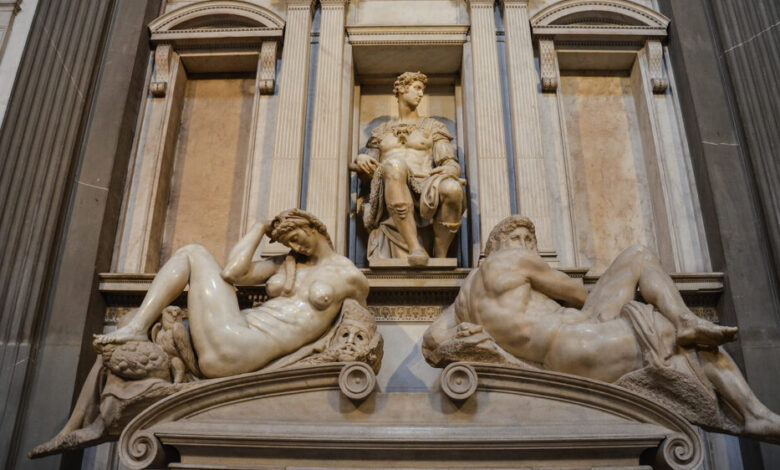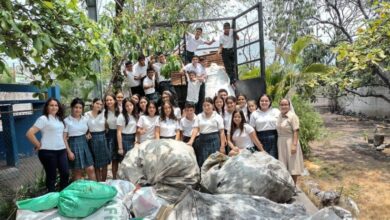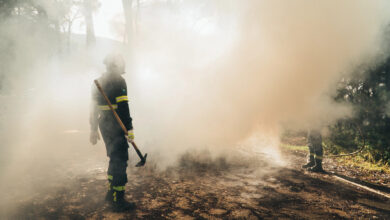
The team used bacteria to clean the tomb of Giuliano di Lorenzo de' Medici, Duke of Nemours (pictured here). Allegorical sculptures of Night and Day flank the marble sarcophagus. Photo Credit: Shutterstock
Animals ItalyHere’s How Bacteria Can Restore Art
A team of restorers decided to get rid of dirt and stains on Michelangelo’s marble sculptures in Florence’s Medici Chapels, Italy, using an unconventional tool: bacteria.
Upon analyzing what stained the tombs, the team opted for non-toxic varieties of bacteria that don’t have spores since “it’s better for our health, for the environment and [for] the works of art,” says art restorer Daniela Manna.
Thanks to an infrared spectroscopy analysis, they identified calcite, silicate, and organic materials. Restorers then tested 8 bacteria strains from a collection of 1,000 and opted for Serratia ficaria SH7, Pseudomonas stutzeri CONC11, and Rhodococcus sp. ZCONT since they consumed the oil, glue, and phosphates present on the statues. The bacteria technique has been used at Milan Cathedral, and Pisa Cathedral in Italy, and at the Church of Santos Juanes in Valencia, Spain. “As in nature we find different species of bacteria that feed on almost anything, we are convinced that we can eliminate other substances from different types of materials,” says Pilar Bosch, a biologist who worked on the Valencia restoration.



